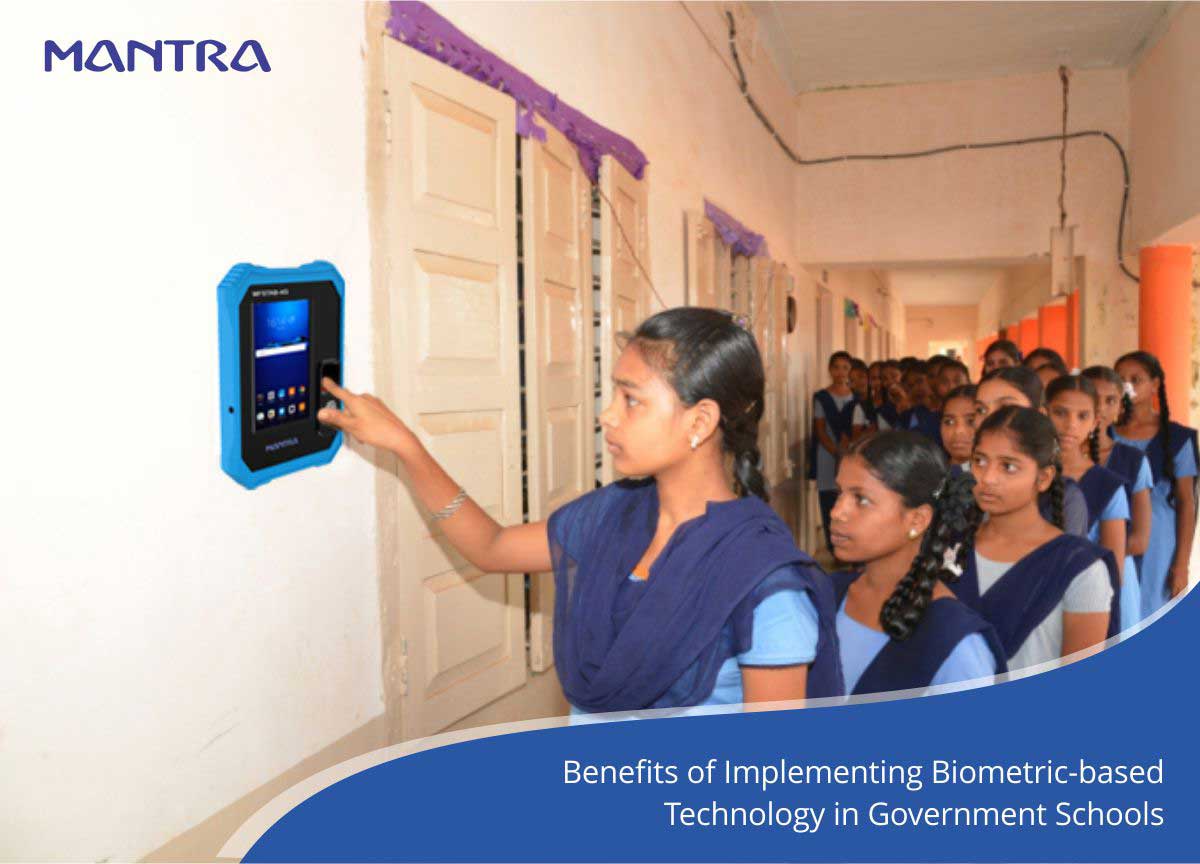
With the world becoming tech-savvy day-by-day, an age-old manual attendance management system in the schools turns out to be a thing of past subjecting to error-prone, time-consuming and inaccurate time-tracking processes. Hence, realizing the need for replacing a conventional time-tracking system with modern-day attendance system, various state Govt. has already started implementing the latest biometric technology based attendance systems.
Biometrics can offer a scalable solution to the government schools in circumventing issues like high absenteeism of teachers & other staff, buddy-punching by students and examination malpractices like impersonation, making false entries in examination registers, and disclosing students’ identity in answer sheets.
Last month, the Bengaluru Government instructed all the Govt. schools to put into operation biometric scanner devices to monitor the attendance of teachers strictly. However, biometric technology is not just limited to record the school attendance but also to impart multiple benefits to the government, students, and the primary/secondary educational institutions as follow:
Biometric Attendance System for Teachers / Staff
The Indian education system is getting closer to universal education, but the government schools are facing issues in imparting quality education due to various reasons. Some of the reasons for the poor quality of education in Govt. Schools include an absence of around 25% of teachers every day.
However, the increasing acceptance of biometric technology by the government has led the public educational institutes of multiple states to gear up for the implementation of Aadhaar-enabled biometric attendance system (AEBAS) for teaching & non-teaching staff.
AEBAS is an online attendance system which helps the government in monitoring and managing the clock-in/clock-out time of the government officials inclusive of the faculties of government schools.
So, biometric-based school attendance system can help the government in boosting quality education, improving the punctuality & availability of teachers, strengthening student admissions in Govt. schools and real-time attendance monitoring of the teaching/non-teaching staff.
During AEBAS process, the biometric details of teaching/non-teaching staff are verified against their Aadhaar numbers using UIDAI’s server that is further attached to a centralized educational database for daily attendance monitoring.
Recently, the Department of School Education in TN has given orders to the Chief Education Officers of the state to make sure that all 7,726 government-aided higher secondary schools gets equipped with biometric attendance systems.
Identification of Students to Receive Scholarship
The educational system of India strives to offer multiple benefits to students in an unbiased manner with the aid of different student development schemes and scholarship programs. However, identifying a student precisely and proffering financial assistance (in the form of scholarships) to the righteous recipient imposes a significant challenge for the government.
As per the current process, a student is granted scholarship only after his/her successful conduction of manual paper-based verification process by the school authorities. This manual verification procedure significantly delays the process of granting scholarships to the students. Hence, the need for a fast, efficient, and reliable verification process calls for biometric identification technology to facilitate scholarship benefits to deserving and righteous students.
Biometric identification technology is an accurate and ultra-modern way of identifying an individual based on his/her physical attributes such as fingerprint, IRIS, facial, and palm-vein impressions.
Consequently, offering scholarships through Aadhaar and biometric verification ensures a transparent, fair, and reliable delivery of the benefits. Additionally, the implementation of Aadhaar-enabled biometric devices mitigates the old practice of picking students randomly to impart scholarship benefits.
The Andhra Pradesh Government has already laid the provisions for sanctioning scholarships through Aadhaar and biometric authentication to the college students by utilizing the ePASS server.
Student Registration and Verification for Examination
Rising occurrences of impersonation in examination by the students have become a matter of concern for the educational department. Thus, it becomes essential for the government to embrace stricter rather an accurate and authentic process of identifying students and recording their attendance in exams.
Currently, the examination conducting authorities have to go through many processes involving registration, enrollment, and generation of exam hall tickets for the students before carrying out an entrance exam ticket for the students. To cut short all these processes into one biometric identification and authentication processes must be utilized to register and identify students at during examination.
Biometrics will not only benefit the school authorities in conducting examinations in a fair, efficient, and transparent manner but also eliminates the headache of students of printing the hall ticket. For online/offline assessment, all it takes for the student is his/her fingerprint, iris or facial recognition and soft copy of the hall ticket.
Conclusion
Monitoring and managing teacher’s presence rate in the government schools is substantial for quality education, whereas precise identification of students is crucial for providing scholarship benefits to the students in a fair manner under various student development schemes and transparent examination system is requisite to enhance the quality of education in Govt schools. Moreover, biometric-based technology can serve as a comprehensive solution for Government schools in bringing all these positive impacts on the education system in India.
Comments